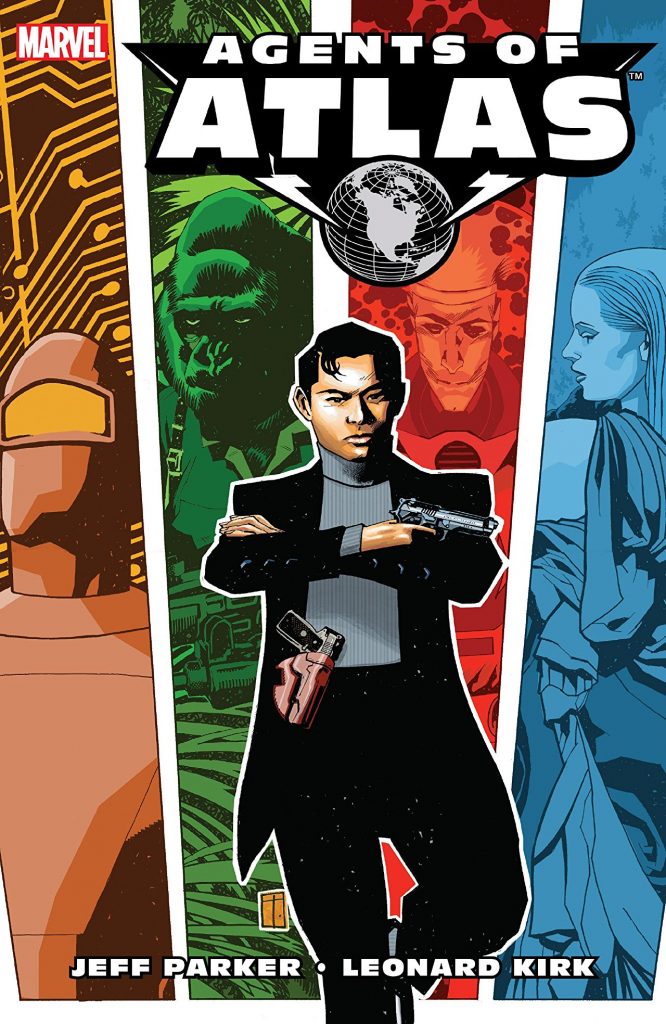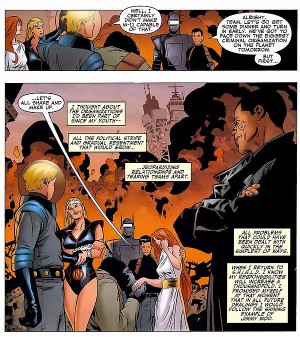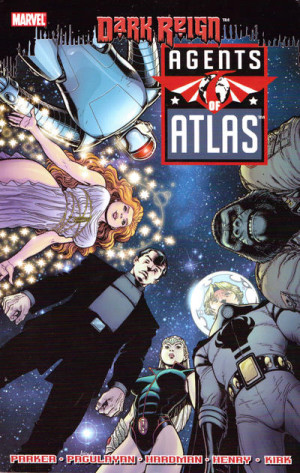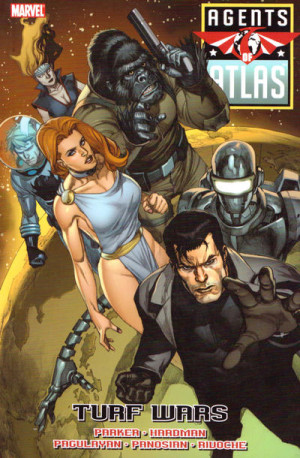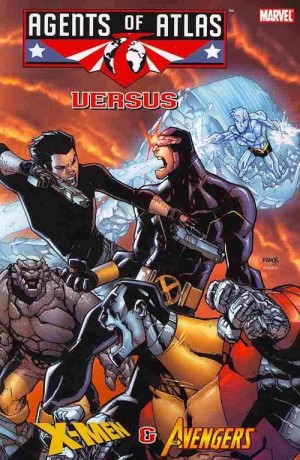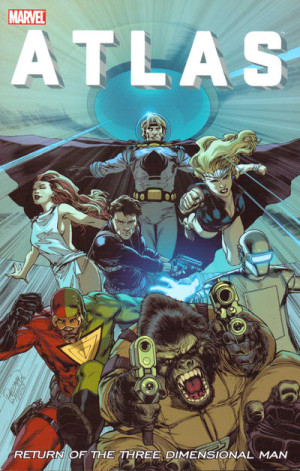Review by François Peneaud
A robot, a spaceman, a mermaid, a goddess of love, a talking gorilla and a spy fly away in a flying saucer. Sounds silly? It is in fact the start of one of the best superhero comics of the last decade.
Writer Jeff Parker, prodded by a Marvel editor who’d thought him perfect for the project, set out to rejuvenate a bunch of mostly forgotten characters from the pre-superhero era of Marvel (roughly during the 1950s, when the company was called Atlas), only used again in a 1970s issue of What If?, an alternate-history series. Some of those characters had had their own, short-lived series, some had only appeared in anthologies. They were mostly blank slates, with almost no common history to bother with.
In the present day Jimmy Woo is an old man, an agent of S.H.I.E.L.D., who for mysterious reasons gets a team killed and himself badly burned during an unauthorized mission. Enter Gorilla Man, another S.H.I.E.L.D. agent, the aforementioned talking gorilla, who reveals to their superiors that he used to know Woo back in the fifties, when they were part of a secret, forgotten team. He snatches the comatose Woo with the aid of M-11, an eye-beam shooting robot. After that, things become even weirder when Jimmy is rejuvenated, though without his memory, and the rest of the team joins them: Marvel Boy, telepathic owner of the saucer, who was raised by settlers on Uranus; Venus, who claims to be the Goddess of Love herself; Namora, a female version of Namor, The Sub-Mariner.
Parker achieves many interesting things with that set-up by embracing its pulp/1950s roots, making fun of them while modernising them, both inside the fiction and outside. His characters don’t unite to fight super-villains, but to discover the truth about Jimmy’s failed mission, as they face their old, also forgotten enemy the Yellow Claw. He was originally a second-rate Fu Manchu, who’s head of the secretive Atlas Foundation and uncle of Suwan, Jimmy’s old love, in true cliched tradition. We follow them as they’re caught in the tangled web woven by the unfortunately-named Asian menace who’s gone global.
The characters themselves comment on the racism inherent in naming an Asian villain “Yellow Claw”, with Parker finding a clever way to reclaim that history. The ambiance of the series is like that: fun, intelligent, with characters who have motivations beyond fighting the super-villain of the month and enjoy themselves, far from mopping superheroes. This is a meta-fiction, in a different vein from Warren Ellis and John Cassaday’s Planetary, celebrating with a self-knowing humor and a real sense of wonder the weirdness of that shadowy world, with twists and turns that should capture the reader’s interest.
Leonard Kirk’s art is of course a big part of the book’s success. His style is both classic and modern, with a clean line and dynamism that often refers 1950s and 1960s artists, while offering layouts and a storytelling that definitely place him in the new century. He seems able to draw everything, from gorillas to scantily-dressed goddesses, from giant dragons to handsome men, from spaceships to jungles.
Readers who are into comics history will enjoy the bonuses at the back of the book: apart from commentaries and sketches by the creators, you get reprints of the first appearances of the characters from the late 1940s and early 1950s.
Agents of Atlas never received the commercial success it deserved, yet this tale would spawn a further six graphic novels, starting with Agents of Atlas: Dark Reign a couple of years later.
